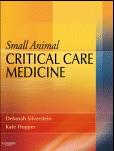
KEY POINTS
• Determination of colloid osmotic pressure (COP) can guide artificial colloid therapy in veterinary patients.
• Estimation of COP via equations using the patient's albumin and globulin concentrations are unreliable, particularly in critically ill patients that may have altered albumin-to-globulin ratios.
• Direct measurement via a colloid osmometer is the only reliable way to monitor COP.
• Maintenance of a goal COP of at least 15 mm Hg in whole blood for both dogs and cats reduces the risk of edema formation and secondary organ dysfunction associated with edema.
• Plasma osmolality can be estimated from an equation or measured directly via a freezing point depression osmometer.
• Diagnosis of an osmolal gap (measured plasma osmolality – estimated plasma osmolality) of greater than 10 mOsm/kg indicates the presence of another osmolal, such as ethanol or ethylene glycol and its metabolites, and may be clinically useful in diagnosing these toxicities.